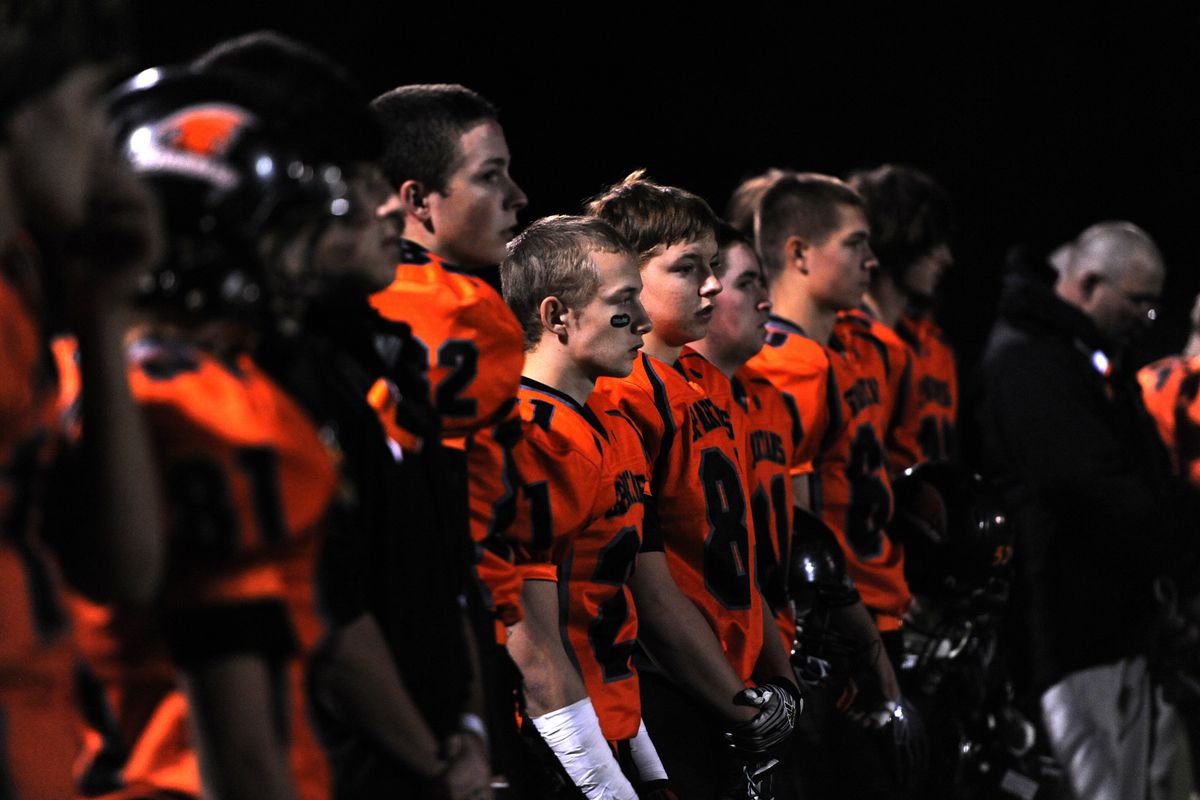Student athletes play a risky game

PRIEST RIVER, Idaho – As Bobby Clark lay in his hospital bed struggling to emerge from a coma, his football teammates in this timber community honored him Friday with words, prayer and spirited play.
A rash of concussions among the Priest River Lamanna High School football team has rattled this community of 1,750 people. At least nine of Priest River’s 45 players have suffered a concussion in this young football season.
It has spooked some parents, who have asked their kids to sit out temporarily. Coaches and school officials have been busy preaching safety to their players. But in football, violent collisions are celebrated and aggressive play can be the difference between winning and losing.
“I found myself this week thinking about what an oxymoron it is to play football safely,” said Michael McGuire, superintendent of West Bonner County School District, which includes Priest River.
“I know the community loves the sport, but I worry.”
A new study released this week by the federal Centers for Disease Control and Prevention found that the number of student athletes seeking hospital care for concussions has risen 60 percent in the past decade.
Some of the increase can be attributed to heightened awareness. Coaches, trainers, parents and students know the dangers of concussions and brain trauma.
This awareness also has sparked debate.
Questions and criticism regarding player safety have ricocheted around the region since the Sept. 30 game, when three Priest River players suffered concussions in a blowout homecoming loss to Timberlake High School.
Clark collapsed while heading to the sideline during the game. He was whisked to a nearby hospital and then airlifted to Providence Sacred Heart Medical Center, where surgeons went to work. He remains in critical condition, according to hospital officials.
His mother has been trying to keep an anxious community informed. She posted online Friday that Bobby’s eyes were open and that he squeezed her hand. The family hopes Bobby, a senior, may be taken off the ventilator this weekend.
“I’ll tell you something about Bobby: He is an example of courage and kindness,” said Shelley Brooks, high school principal. “He is just such a good person and a good student. He is special to a lot of people around here.”
Before Friday night’s game against Chewelah, school athletic director Brandi Johnson asked the fans and players to show the kind of courage and will that she said Clark exemplified.
The local booster club sold buttons and school-color orange and white ribbons. Donations to help out the family are pouring in.
“Everyone likes Bobby,” said fellow senior Karen Snow. “He brings out the best in people.”
A large get-well card hangs in the high school hallway and some students have traveled to Spokane to see their friend.
Priest River is known as a basketball, wrestling and track town. Football awards are largely absent from the school’s trophy case. But this fall everyone is rooting for the team as it tries to overcome its concussion problems.
McGuire points to a small team as a possible reason for the head injuries.
The team is light, said Chuck GrotJohn, whose grandson plays wide receiver.
“We’re getting beat on the line. Just not big enough,” he said. He said he thinks many of the players are exhausted late in the game from playing both offense and defense.
Against Chewelah, the team played hard. They completed a 64-yard touchdown pass with 10 seconds left in the first half to close the scoring gap to two touchdowns – 28-14. The final was Chewelah 43, Priest River 21.
Before the football season began, every Priest River player underwent computer-based tests, created by medical staff at the University of Pittsburgh, that measure a player’s memory, visual motor skills, brain processing and reaction speed.
The test establishes a baseline so that if an athlete suffers a concussion, medical staff can evaluate whether or when a student might be able to resume playing sports.
The focus on concussions has taken root in athletics, from junior high volleyball to the National Football League.
“We now require every coach at every school to take concussion management courses,” said John Billetz, executive director of the Idaho High School Activities Association.
“Sixty years ago, you never came out of a game. But we have to change that culture of playing hurt. No game is that important.”
It puts the onus on coaches and trainers. Players are heralded for toughness and perseverance. Some interpret that as playing at any cost, he said.
Last year the state association mailed out concussion surveys to the state’s 154 high schools. Billetz said 67 schools returned the surveys – and reported 242 players suffered concussions.
“I looked at that and thought, ‘My God, that’s just unreal.’ ”
Billetz then consulted with concussion specialists who told him that such numbers are in line with current trends.
“We were just blown away. It’s changed how we look at these injuries.”